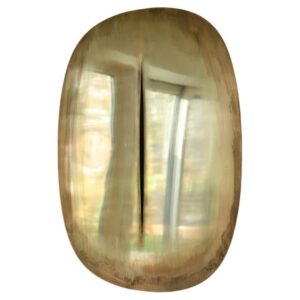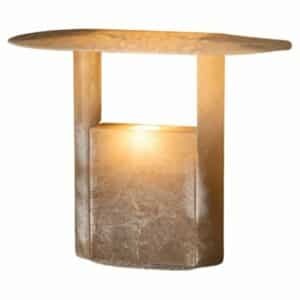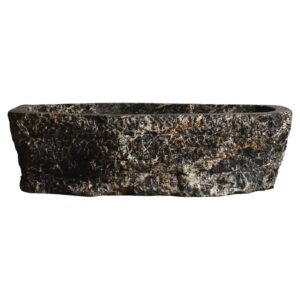
Alexandra Donohoe Church / Decus

As the founder of Decus in Woollahra, Alexandra Donohoe Church, has grown her successful design business over the past 14 years. Highly awarded for her work, Alexandra leads a predominantly an all-female studio. While her work has been published in Vogue, Architectural Digest and Elle Decoration, her personal story is less known.
Born and raised in Sydney, Alexandra was always drawn to creative endeavors, so no one was surprised when she enrolled in Interior Architecture at University of NSW. Establishing her career at some of Sydney’s most sought after design studios, a GFC-induced redundancy in 2008 was the push she needed to go out on her out. And 14 years later she hasn’t looked back.
When starting Decus she intentionally prioritized their philosophy rather than establishing a signature design style. They’re not necessarily driven by a singular aesthetic, but clients are drawn to their approach. To be of real value Decus believes you need to respond to the identity of their occupants, help each client tease out their needs, and work collaboratively to design spaces that truly respond to, and reflect, their lifestyles, interests, aspirations, and personalities.
Today, Alexandra and her team are forging a unique design language within the residential interior landscape. Passionate about family, friends, art and travel, she draws inspiration from her love of Italian design, Brazilian modernism from the 50s and 60s, and the team of inspiring designers she has built.
1. You lived in the US during your childhood and then moved to Australia, where you grew up multi-culturally. Could you tell us how your journey into interior design started?
My journey into the industry began serendipitously during my first year at UNSW. Initially studying horticulture, I realized my creative path lay within the built environment and switched my focus to Interior Architecture. After completing my degree and gaining experience with leading Australian architecture practices, I stepped out on my own and founded Decus.
Inspired by my childhood in the US and global sourcing trips, I draw on the Mid-Century Brazilian designers’ ethos, blending form, balance, and texture. My work is characterized by refined curation, whimsical detailing, and provocative combinations of finish.
2. Has there been a defining moment in your career?
To be honest the GFC. Had I not been retrenched from another design practice, I would never have had the push I needed to go out and start my own studio. Necessity is the mother of invention. The intervening years have gifted me grit and tenacity, a thicker skin and the understanding of what it takes to create something you’re proud of from scratch. *Spoiler alert – self-awareness (which is an eternal pursuit) is key to the whole endeavour.
3. You mentioned how you love understanding the needs of your clients, and understand how they live to be able to design the most beautiful outcome. How do you start a project? What do you think is the secret of a successful project?
Over the years we’ve realized that interior design is only one ingredient in the recipe. A truly fulfilling project involves understanding how clients think, what their values are and what they are really trying to say so communication is key. We’ve developed an exhaustive detailed briefing process over the years that gives us insight into these aspects of clients so we can craft a response that is unique to them.
Trust. Trust is critical to a successful project. I acknowledge this is a big ask for a client who you may have only just met. But I’ve never seen positive outcomes from micromanagement. The success of a project boils down to clients giving us the reins to lead the project. And humour is a vastly underrated tool. Keeping things light when people are investing so much and working so hard to make things come together helps to cut through the pressure and stress. There has to be joy and playfulness in this or else why would anyone be mad enough to do it?
4. Could you tell us about one of your favorite projects and what makes this so special?
We’ve just finished a project that was particularly close to my heart. Mainly because of the client relationship. They really did cede control to us and I think the outcome is far better for it – bias and all.
5. What was one of the hardest learned lessons in your practice?
That direct and clear feedback is just that; feedback. Receiving direct feedback doesn’t mean you’re not valued or worthy or terrible at your job, it just means that there’s room for improvement and I honestly believe that if you’re not constantly evolving you’re going backwards. I do think we live in a culture that isn’t great at handling anything that isn’t overwhelmingly positive and yet the gold, the real gold is in the moments where for whatever reason you didn’t’ get it right and need to find a better way forward.
6. How do you get inspired? What fuels your creativity? And how do you discover inspiring new designs?
Travel, travel, travel. Travel is a constant source of inspiration for me. Exploring diverse cultures and design scenes fuels my creativity and opens my eyes to new possibilities. For instance, a recent sourcing trip to Paris revealed hidden gems within the city’s historic architecture, from the transformative Bourse de Commerce to the artisanal craftsmanship at Serie Rare. These experiences outside of my daily routine ignite fresh ideas and enable me to bring a global perspective to my designs.
7. Do you have a mantra that encapsulates your taste in interior design?
The mantra is less about the taste and more about the process.
“Spark some bloody joy”



8. How do you think the interior design industry changed over the last decades?
I often joke that I’m polyamorous when it comes to design. When I studied Interior Architecture we were in the thick of early naughts minimalism here in Australia. It was a sea of terrazzo, carrara stone and white polyurethane as far as the eye could see or you were in the other camp overzealously specifying mouldings, grasscloth papers and intricately detailed mosaics.
I think now people are less puritanical about design and open to blending of genres and design movements whilst simultaneously becoming more rigorous in the execution of the details.
9. Is there a design piece you wouldn’t be able to live without?
I’d say right now it’s a tie between our Pierre Paulin Alpha Lounge and my Charles Pollak executive chair. Possibly because I spend so much time in each doing markups.
10. You must be overwhelmed with clients who would like to work with you. How do you choose your projects?What is the most important thing when you choose your next project?
Client fit is crucial to the success of a project and that initial meet and greet is akin to speed dating. Projects can take years to complete, it’s a long-term relationship so it’s important to make sure it is aligned.
We have a list of 5 criteria that we need to feel good about to take on a project. Client fit, Expectation of quality (i.e. is it high?) Creative freedom/opportunity, Timing, Fee. I recently heard a film director say that he would only take on a project if it were a “Hell’s Yes” from him…that’s the goal right there.
11. What advice would you give to beginner designers?
Do your research about what the industry is like before taking the plunge. Get comfortable with managing multiple deadlines. Look at salary schedules. Reach out and speak to people in the industry first to understand what it’s like. It’s easy to be swept away by the seemingly glamorous elements of the profession but to do anything with exceptional quality takes commitment and can be gruelling at times.
12. What are your 3 favorite pieces from the Philia Collection?
-
Slit Mirror by Phillip Jividen
€11,000Pagoda Lamp by Henry Wilson
€15,40013. Any books/podcasts you would like to recommend to our readers?
- The Grand Tourist – for a peek into the lives of other creatives. Truly fascinating!
- Smartless – for a laugh
- Armchair Expert – for a variety of speakers






